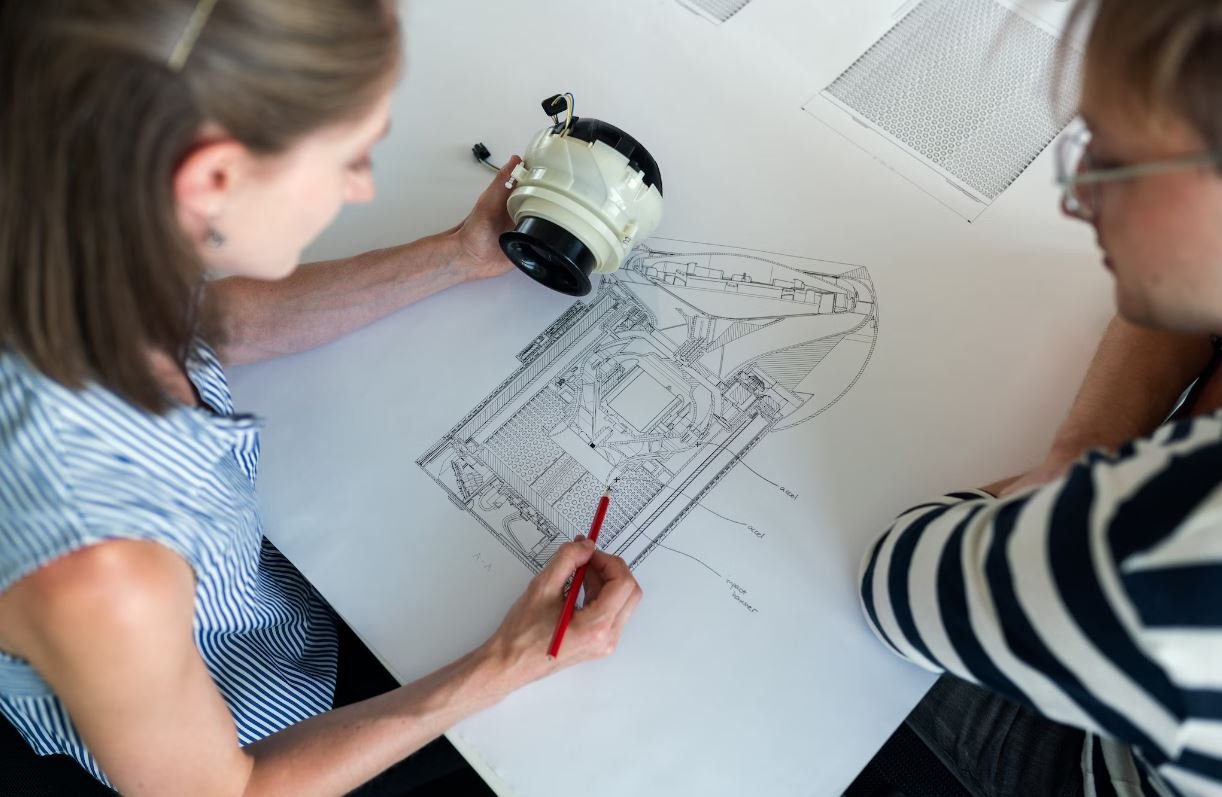What Is AI Actually
AI, or Artificial Intelligence, refers to the simulation of human intelligence in machines that are programmed to think and learn like humans.
Key Takeaways:
- AI refers to machines that can simulate human intelligence.
- It involves programming machines to think and learn like humans.
- AI can be classified as either narrow or general artificial intelligence.
**AI** can be broken down into two main categories: narrow AI and general AI. Narrow AI, also known as Weak AI, is designed to perform a specific task, such as facial recognition or voice assistants. *Narrow AI is already widely used in applications such as virtual personal assistants, recommendation systems, and autonomous vehicles.*
**General AI**, on the other hand, is more advanced and can perform any intellectual task that a human can do. *General AI is still largely hypothetical and has not been achieved yet.*
AI technology relies on a number of subfields, such as machine learning and natural language processing, among others. Machine learning allows machines to learn from data and improve their performance over time, while natural language processing enables machines to understand and respond to human language.
The Impact of AI
AI has the potential to revolutionize various industries and reshape the way we live and work. Here are a few ways AI is making an impact:
- **Automation**: AI can automate repetitive and mundane tasks, freeing up humans for more complex and creative work.
- **Personalization**: AI-powered recommendation systems provide personalized suggestions for products, services, and content based on user preferences and behavior.
- **Improved Efficiency**: AI can analyze vast amounts of data quickly and accurately, helping organizations make more informed decisions and streamline operations.
- **Healthcare**: AI can assist in medical diagnoses, drug discovery, and personalized treatment plans, leading to improved healthcare outcomes.
AI has also raised concerns regarding job displacement and ethics. While AI has the potential to create new job opportunities, it may also result in job losses as automated systems become more prevalent. Additionally, ethical considerations are essential in AI development to ensure the responsible and fair use of AI technology.
AI Applications
AI is already utilized in various industries and domains. Here are a few notable AI applications:
- **Virtual Assistants**: Virtual personal assistants like Siri and Alexa use AI to understand voice commands and provide responses or perform tasks.
- **Autonomous Vehicles**: AI plays a crucial role in self-driving cars, allowing them to perceive and navigate their surroundings.
- **Financial Services**: AI is used for fraud detection, algorithmic trading, and personalized financial advice.
The Future of AI
The future of AI holds immense potential. As technology continues to advance, we can expect further developments in the field of AI, leading to more advanced and capable systems.
With ongoing research and innovations, AI is likely to become an integral part of our daily lives, revolutionizing industries and enhancing our capabilities.
AI holds promise for addressing complex challenges and improving efficiency across various sectors, but it is important to consider the ethical implications and ensure responsible AI development.

Common Misconceptions
Misconception #1: AI is the same as human intelligence
One common misconception about AI is that it possesses the same level of intelligence as humans. However, AI is designed to mimic human intelligence, but it does not possess consciousness or true understanding like humans do.
- AI cannot experience emotions or consciousness.
- Unlike humans, AI lacks intuition and creative thinking abilities.
- AI is designed to follow pre-programmed rules and algorithms.
Misconception #2: AI will replace human jobs
There is a widespread belief that AI will lead to mass unemployment and that machines will completely replace humans in the workforce. While AI has the potential to automate certain tasks, it is unlikely to replace every job or render humans obsolete in the workplace.
- AI is more likely to augment human capabilities rather than replace humans entirely.
- Jobs that require creativity, critical thinking, and human interaction are less likely to be automated.
- AI may create new job opportunities that we haven’t even considered yet.
Misconception #3: AI is infallible and unbiased
AI algorithms are often assumed to be completely objective and free from bias. However, AI systems are developed and trained by humans, which means they can inherit and perpetuate certain biases present in the data they are trained on.
- AI can unintentionally reinforce existing biases and discrimination.
- AI algorithms can be influenced by the data they are trained on, which may contain inherent biases.
- Regular monitoring and careful training can help mitigate biases in AI systems.
Misconception #4: AI is a futuristic technology
There is a misconception that AI is something out of science fiction and remains a distant technology of the future. In reality, AI is already present in many aspects of our daily lives and has become an integral part of various industries.
- AI is already powering virtual assistants like Siri and Alexa.
- Recommendation algorithms in streaming services and e-commerce platforms utilize AI to personalize suggestions.
- AI is being used in healthcare, finance, transportation, and many other industries.
Misconception #5: AI will become sentient and take over the world
Some people believe that AI will eventually become self-aware and pose a threat to humanity, as portrayed in popular media. However, this is largely a speculative idea and not grounded in reality.
- The development of sentient AI is highly hypothetical and far from being attainable.
- AI systems are developed with specific goals and constraints, and do not possess the desire or ability to dominate the world.
- Scientists and researchers prioritize building ethical and beneficial AI systems.

Table 1: AI Across Industries
Artificial Intelligence (AI) is currently being implemented across various industries, revolutionizing the way businesses operate. The table below showcases the potential impact of AI in different sectors and their projected market value by 2025.
| Industry | Projected Market Value (2025) |
|---|---|
| Healthcare | $34.8 billion |
| Automotive | $9.6 billion |
| Retail | $8.8 billion |
| Finance | $7.4 billion |
Table 2: Advantages of AI in Healthcare
AI has significant benefits in the healthcare industry. The table below highlights some advantages of using AI technologies in healthcare.
| Advantages |
|---|
| Improved Disease Diagnosis |
| Enhanced Treatment Planning |
| Predictive Analytics for Patient Outcomes |
| Efficient Patient Monitoring |
Table 3: Top AI Companies
The AI industry is fiercely competitive, with several prominent companies leading the way. The table below showcases some of the top AI companies based on their market capitalization.
| Company | Market Capitalization |
|---|---|
| Alphabet (Google) | $1.4 trillion |
| Microsoft | $1.3 trillion |
| Amazon | $1.2 trillion |
| IBM | $108 billion |
Table 4: AI Adoption by Age Group
The adoption of AI technologies varies across different age groups. The table below shows the percentage of individuals using AI-based applications by age group.
| Age Group | Percentage of Users |
|---|---|
| 18-24 | 42% |
| 25-34 | 58% |
| 35-44 | 49% |
| 45-54 | 36% |
| 55 and above | 21% |
Table 5: AI’s Impact on Job Market
AI has been a topic of debate regarding its impact on employment. The table below provides an overview of jobs that may be affected by AI in the coming years.
| Job Category | Percentage of Jobs at Risk |
|---|---|
| Transportation | 60% |
| Retail Sales | 53% |
| Manufacturing | 47% |
| Customer Service | 31% |
Table 6: AI in Education
AI has tremendous potential in the field of education. The table below presents different ways AI is transforming the educational landscape.
| Applications |
|---|
| Personalized Learning |
| Automated Grading |
| Tutoring Systems |
| Virtual Classrooms |
Table 7: AI in Agriculture
AI is revolutionizing agriculture by offering efficient solutions to enhance productivity and sustainability. The table below outlines the benefits of implementing AI in the agricultural sector.
| Benefits |
|---|
| Automated Harvesting |
| Precision Farming |
| Pest and Disease Detection |
| Smart Irrigation |
Table 8: Ethical Implications of AI
As AI advances rapidly, ethical concerns arise regarding its use. The table below highlights some of the major ethical implications brought by AI technologies.
| Implications |
|---|
| Privacy Concerns |
| Job Displacement |
| Algorithm Bias |
| Lack of Human Control |
Table 9: AI in Finance
The finance sector leverages AI to optimize operations and gain a competitive edge. The table below provides examples of AI applications in finance.
| Applications |
|---|
| Fraud Detection |
| Algorithmic Trading |
| Customer Service Chatbots |
| Risk Assessment |
Table 10: AI and Climate Change
AI plays a crucial role in combating climate change by enabling sustainable practices. The table below highlights AI applications in addressing environmental challenges.
| Applications |
|---|
| Energy Optimization |
| Smart Grid Management |
| Environmental Monitoring |
| Resource Conservation |
Artificial Intelligence is transforming industries by introducing cutting-edge technologies and innovative solutions. From healthcare to finance and even addressing climate change, AI’s potential is vast and diversified. As technology continues to evolve, it is crucial to consider the ethical implications of AI adoption. By harnessing the power of AI intelligently, society can unlock new opportunities and create a better future.
Frequently Asked Questions
What is Artificial Intelligence?
Artificial Intelligence (AI) refers to the simulation of human intelligence in machines that are programmed to think and learn like humans. It involves creating computer systems capable of performing tasks that would typically require human intelligence.
How does AI work?
AI works by using algorithms and data to train machines to make decisions and perform tasks independently. It involves techniques such as machine learning, deep learning, and natural language processing to enable computers to understand, reason, and learn from data.
What are the different types of AI?
There are generally three types of AI: narrow or weak AI, general or strong AI, and artificial superintelligence. Narrow AI is designed to perform specific tasks, while general AI possesses human-level intelligence across a wide range of tasks. Artificial superintelligence refers to AI systems that surpass human intelligence in virtually every aspect.
What are the applications of AI?
AI has a wide range of applications across various industries. Some common applications include virtual assistants, image and speech recognition, autonomous vehicles, recommendation systems, fraud detection, and medical diagnosis. It is continually being integrated into different sectors to enhance efficiency and productivity.
What are the benefits of AI?
The benefits of AI include faster and more accurate decision-making, increased productivity, automation of repetitive tasks, improved customer experience, enhanced personalization, advanced data analysis, and improved safety in various domains such as healthcare and transportation.
What are the risks associated with AI?
AI also comes with certain risks and challenges. Some concerns include job displacement and the potential for biases in AI systems, privacy and security issues, ethical considerations, and the challenge of maintaining control and accountability over AI systems.
How is AI impacting society?
AI is revolutionizing various aspects of society, including healthcare, transportation, finance, education, and entertainment. It is reshaping industries, creating new job opportunities, and improving the way we live and work. However, it also raises societal concerns and ethical dilemmas that need to be addressed.
Is AI the same as automation?
No, AI and automation are not the same. While automation involves the use of technology to perform tasks without human intervention, AI goes beyond automation by enabling machines to understand, learn, and make decisions in a manner similar to humans.
Can AI replace humans in the workforce?
AI has the potential to automate certain tasks and replace humans in specific roles. However, it is unlikely to completely replace humans in the workforce. Instead, AI is likely to augment human capabilities, leading to a shift in job roles and the requirement for upskilling and reskilling.
What is the future of AI?
The future of AI holds immense potential for further advancements. It is expected that AI will continue to evolve and contribute significantly to various fields. The future may bring advancements in areas such as robotics, natural language processing, and AI-based decision-making, leading to even greater integration of AI in our daily lives and industries.




